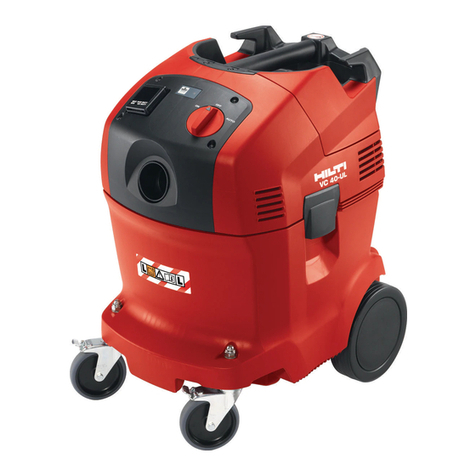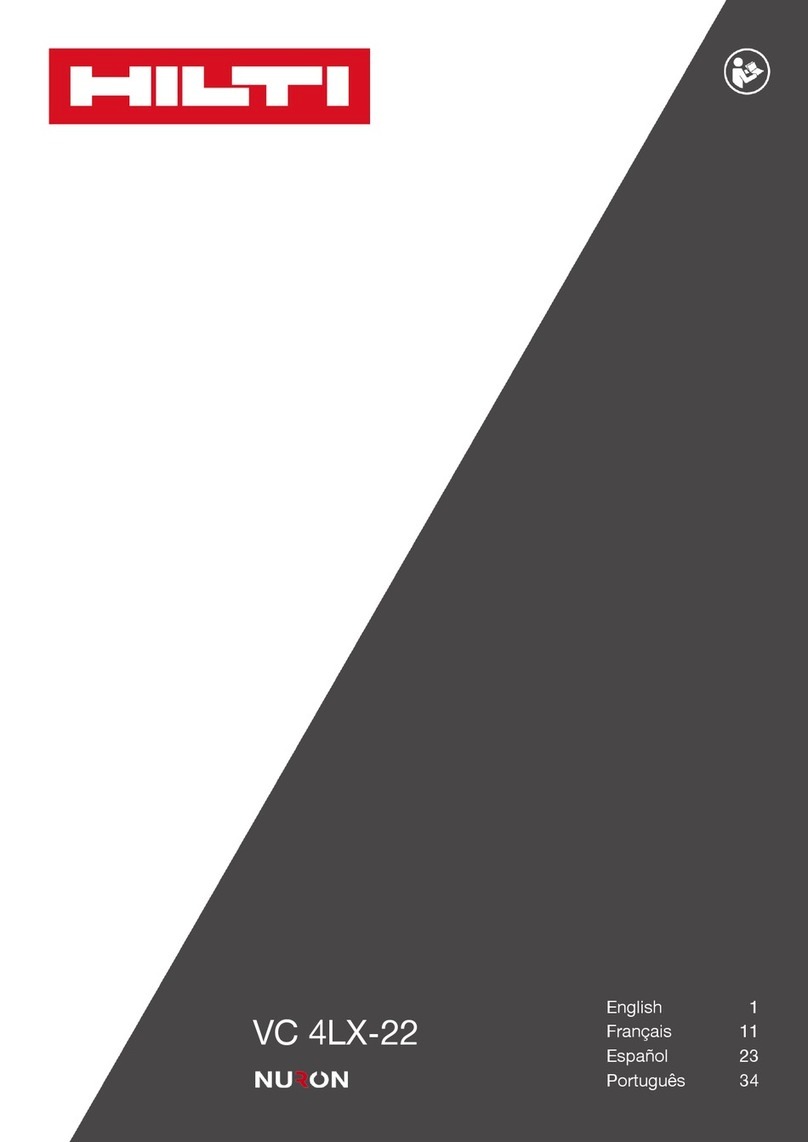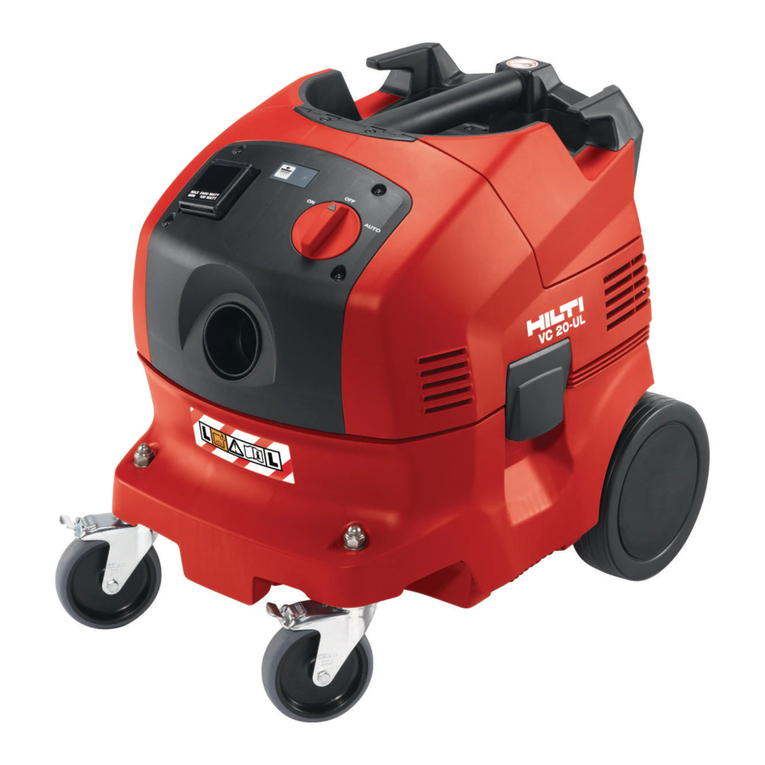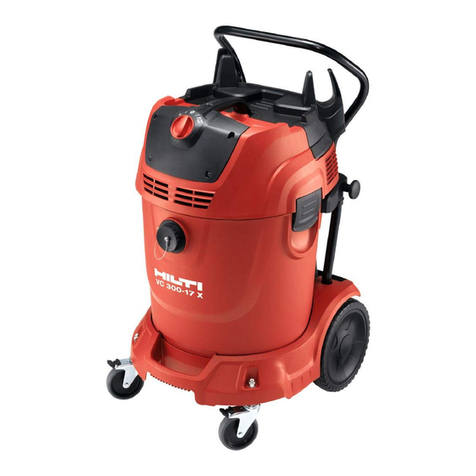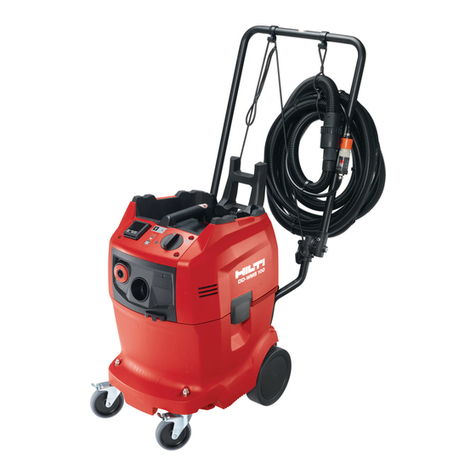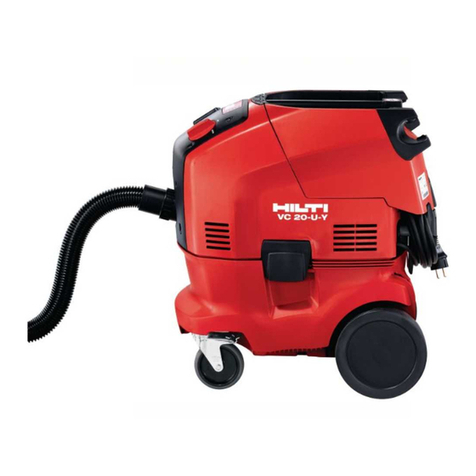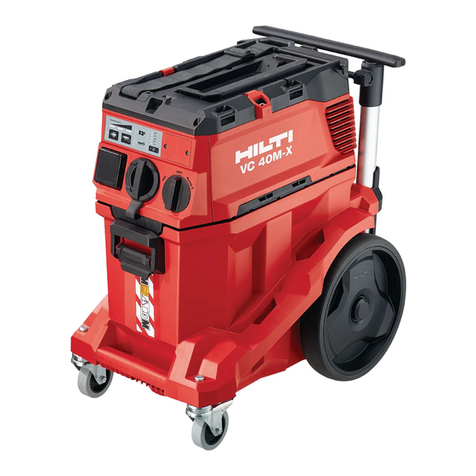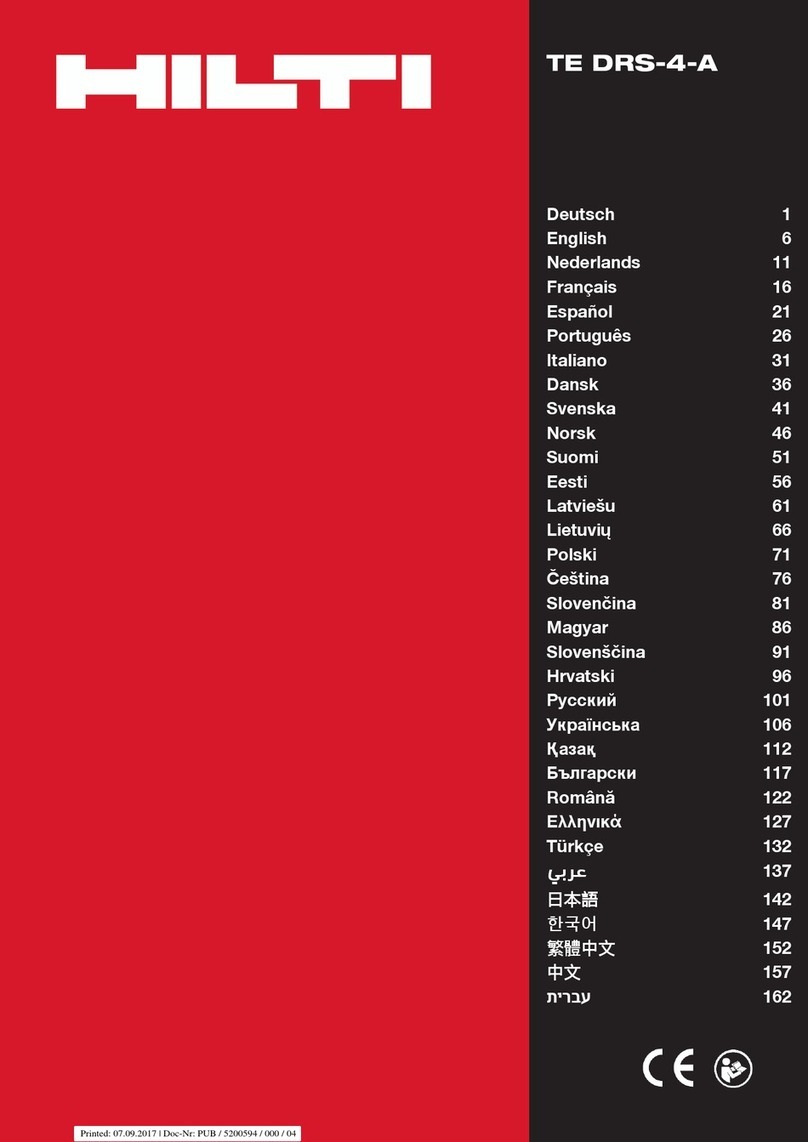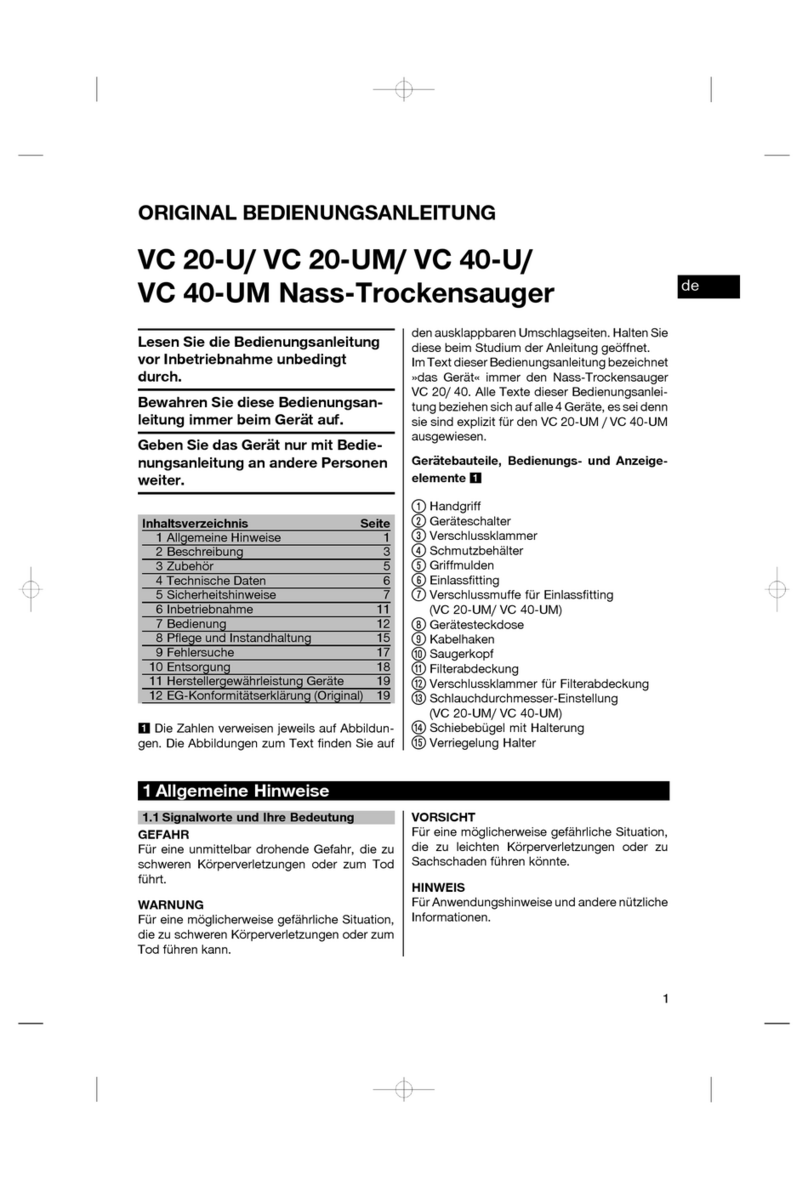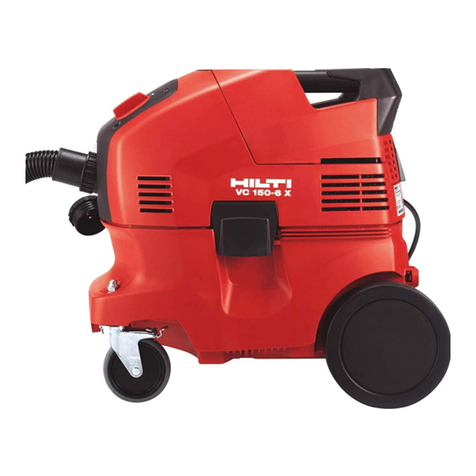
Theappliancemayalsobeusedtopick up liquid waste material.
It is suitable for picking up drilling slurry from mineral materials.
The appliance (VC 20‑UM, VC 40‑UM) is suitable for picking up dry, non-flammable dusts, liquids,
wood chips or shavings and hazardous dusts with an exposure limit value (or, respectively, with
a MAK or AGW value) of ≧ 0.1 mg/m³ (dust class M). The appliance must be equipped with a
suitable filter corresponding to the hazard classification of the dusts tobepickedup.
Only hazardous substances in accordance with IEC 60335-2-69 (class M) may be picked up with
the VC 20‑UM or VC 40‑UM. Picking up any other hazardous substances is not permissible.
Picking up oil or liquids with a temperature of over 60°C is not permissible.
When picking up dusts with an exposure limit value, steps must be taken to ensure adequate
air exchange in the room if the exhaust air from the appliance is released into the room (please
observe the locally applicable regulations).
The appliance must not be used to pick up materials that present a risk of explosion, glowing
or burning materials, flammable materials (exception: wood chips or shavings), aggressive dusts
(e.g. magnesium or aluminium dust, etc.) or aggressive liquids (e.g. gasoline, solvents, acids,
coolants or lubricants, etc.).
Do not operate the appliance when laid on its side (always operate in uprightposition).
Fully loaded with the material picked up, the total weight of the VC 20 must not exceed 37 kg.
Fully loaded with the material picked up, the total weight of the VC 40 must not exceed 55 kg.
Do not stand on the appliance (do not use as a substitute for a ladder).
Do not use the appliance for continuous, stationary operation in automatic or semi-automatic
systems.
The operating personnel must be instructed on how to use the appliance prior to beginning work,
they must be informed of any hazards associated with the materials to be pickedupandthey
must be familiar with the correct procedures for safe disposal of these materials.
Underwater use is not permissible.
Use of the appliance to clean down persons or animals is not permissible.
Use an antistatic suction hose in order to avoid electrostatic effects.
This appliance is suitable for commercial use, e.g. in hotels, schools, hospitals, factories, shops,
offices and by rental companies.
Working on materials hazardous to the health (e.g. asbestos) is not permissible.
The working environment may be as follows: construction site, workshop, renovation, conversion
or new construction.
Observe the information printed in the operating instructions concerningoperation,careand
maintenance.
To avoid the risk of injury, use only genuine Hilti tools and accessories.
The appliance and its ancillary equipment may present hazards when used incorrectly by untrained
personnel or when used not as directed.
Modification of the appliance or tampering with its parts is not permissible.
2.2 Hose diameter settings (VC 20‑UM/ VC 40‑UM)
Hose diameter Hose diameter setting
∅21mm ∅21
∅27mm ∅27
∅36mm ∅36
en
22
Printed: 08.07.2013 | Doc-Nr: PUB / 5128810 / 000 / 01

